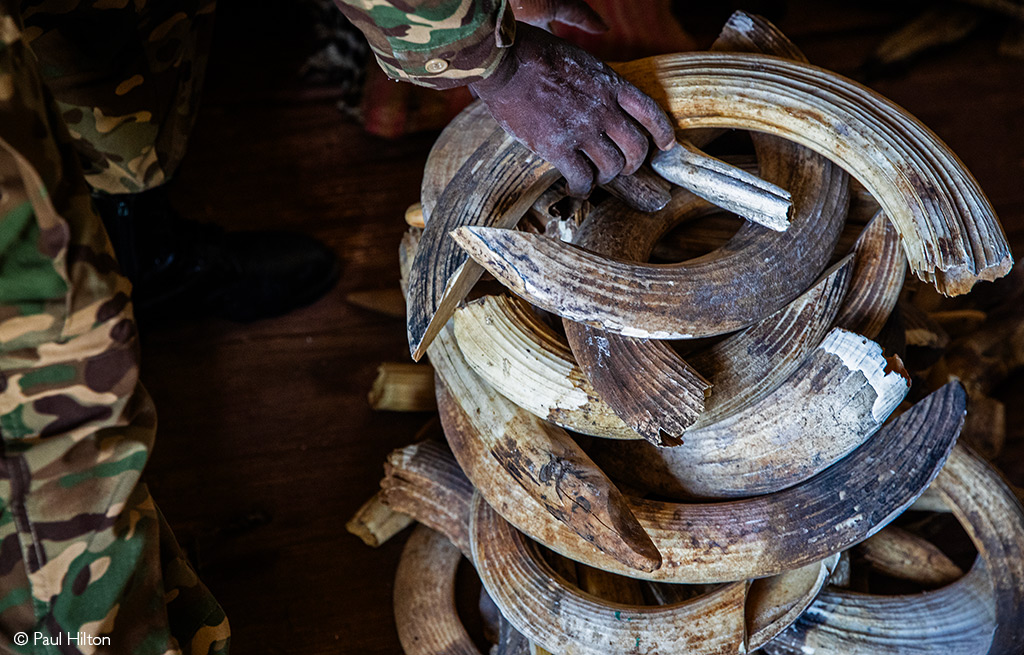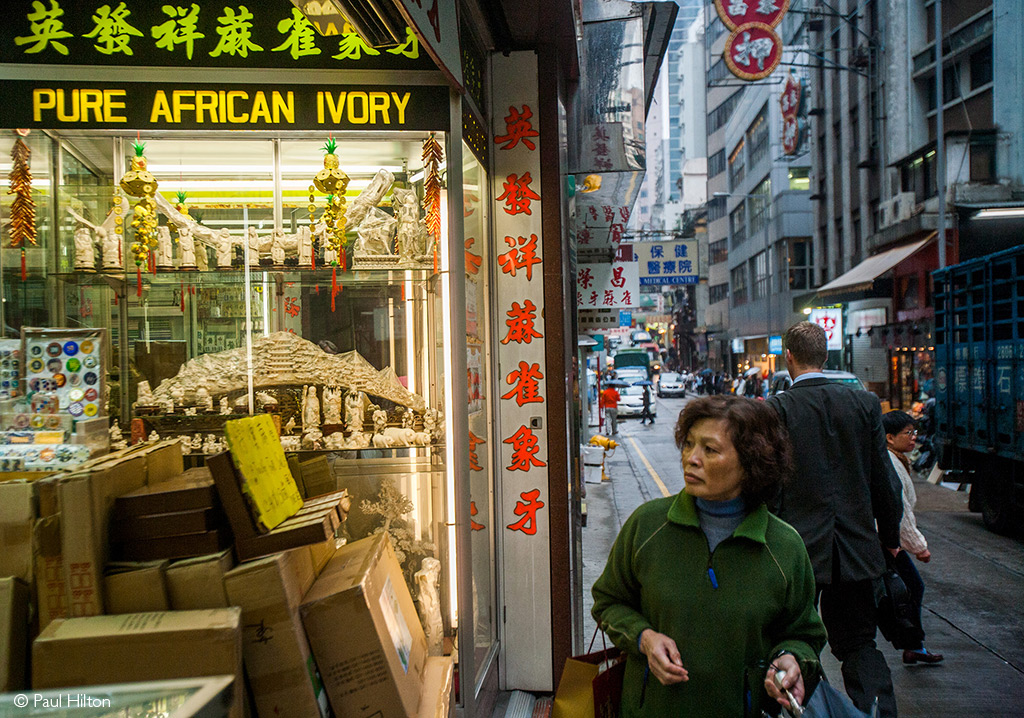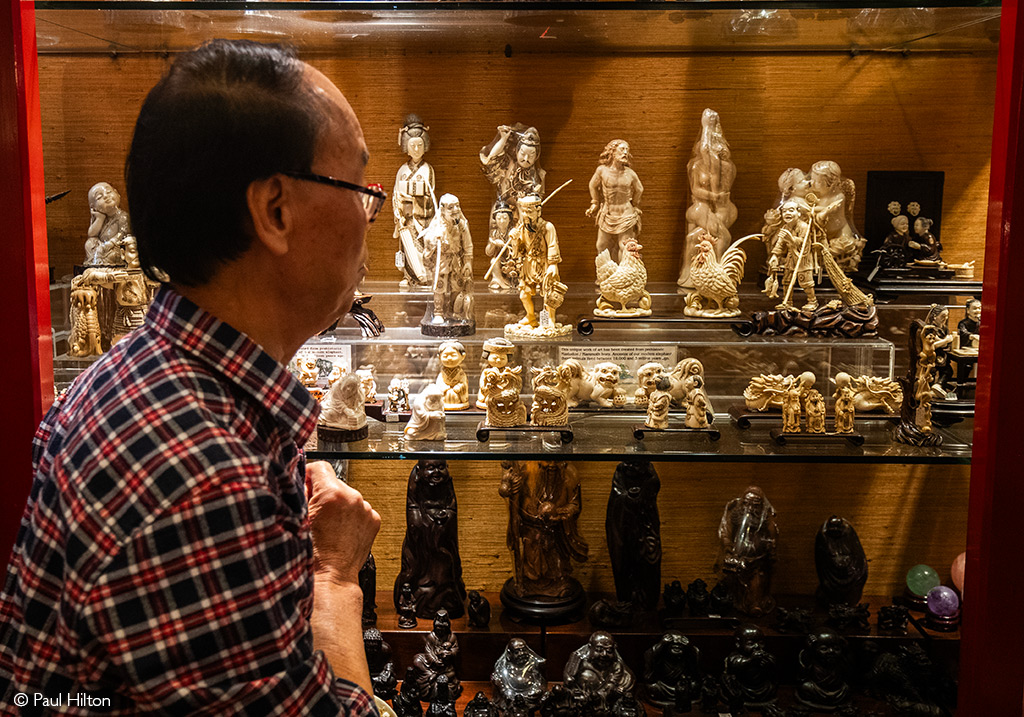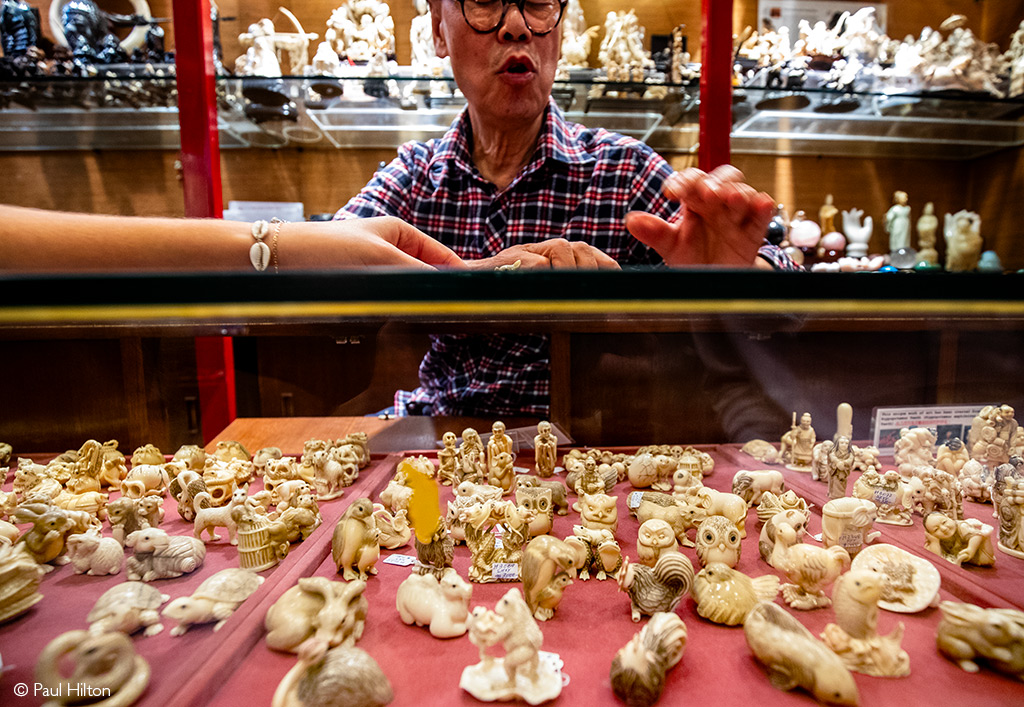
When we think of ivory, elephants come to mind. Yet, hippos are also victims of the relentless ivory trade, with their teeth coveted as a legal and cheaper alternative. Investigative photojournalist Paul Hilton ventured to Uganda, uncovering the grim reality: hippo populations are dwindling due to the soaring demand for ivory, primarily trafficked through Hong Kong.
When we hear the word “ivory”, several factors would likely spring to mind: that ivory is synonymous with elephants, that the industry has decimated elephant populations, and that the trade in their tusks has been highly illegal for decades.
What may be less obvious is that ivory is still greatly prized, particularly in mainland China. Such is the demand it equates to a 23 billion US dollar-a-year industry, with Hong Kong being the primary trafficking portal. What also flies under the radar is that, when it comes to ivory, we aren’t just talking about elephants.
Earlier this year, the spotlight fell on hippos when Hong Kong customs seized a hoard of hippo teeth, which, like the tusks of warthogs and other mammals, are also classed as ivory. While they are used in the same way as elephant ivory, such as in decorative carvings, hippo teeth are not only a legal alternative, they cost far less. They are much easier to come by than elephant ivory.
Buyers believe they are purchasing elephant ivory, resulting in considerable discrepancies in the volume of teeth being declared by importers and exporters and a shocking decline in hippo numbers.
As an investigative photojournalist, I decided to travel to the source of the trade, which brought me to Uganda.
Like many other African countries, Uganda is home to diverse and unique wildlife, including hippopotamuses. Like other fauna-abundant nations, it faces daily challenges with wildlife poaching and illegal trafficking. Rangers are being killed on the frontlines as the last defence for these animals. While the increased scrutiny from rangers means some species numbers are recovering, the hippo (and the lion, due to the big cat bone trade) are not.


Flying my drone over a bloat (yes, a bloat) of hippos from the banks of the river Nile, I observe how languid they seem, reminding me of whales lazily breaking the water’s surface.
On land, they are at home as in the water. Running up to speeds of 30km per hour, hippos are known for spraying their faeces! As anti-social as that sounds, it’s actually a territory-marking exercise aimed at warding off other hippos while also making for more efficient seed dispersal.
With the hippo’s bad temper, enormous jaws and sharp teeth, each measuring half a meter in length, I find myself recalling the saying, “Never get between the hippo and water.” Knowing that hippos kill more humans than any other African animal, this is good advice. The fact that hippos are vegetarians is of little comfort.
Meanwhile, on land, they seem cumbersome and out of place with their large barrel-shaped bodies weighing in at over one and a half tons. Still, they are a joy to watch, and it is a great shame that this unique animal is threatened with extinction, all because of an insatiable desire, half a world away, for ivory.
Rangers from the Ugandan Wildlife Authority, who I spoke with, say that hippos are being targeted every day.
Michael Keigwin, founder of the Uganda Conservation Foundation, acknowledges that the dangerous trade in hippo teeth has led to a significant decline in their population, with over 50% lost nationally in recent years, driven by the ivory trade for their teeth. “Rangers are working overtime to protect them on land and along the rivers systems and lakes. Organised criminal networks and corruption must be stamped out and the demand stopped”.

In Hong Kong, efforts are underway to choke off the ivory thoroughfare. Due to its strategic location, Hong Kong provides an ideal gateway for the illegal wildlife trade between Africa and various parts of Asia. Wildlife products are frequently smuggled through the South Asia Region to destinations such as mainland China and other Southeast Asian countries, where there remains a high demand for exotic creatures and traditional medicines made from animal parts.
Over the years, millions of consumers have travelled to Hong Kong from mainland China to take advantage of the lower prices of luxury wildlife items, and this influx grew with the mainland’s domestic ivory ban taking effect in January 2018.
Even before China instituted the closure of its domestic ivory markets and ivory carving industry, African hippo ivory was in high demand. Up to 90% of the 771,000 kg of hippo ivory traded internationally since 1975 was imported by Hong Kong. Almost three-quarters of this ivory originated from Uganda and Tanzania, but trade with Malawi, Zambia, and Zimbabwe is, worryingly, also on the rise.
Admittedly, Uganda is the only source country to ban the hippo-teeth industry, but trade volume suggests that supply has shifted to the black market.

A study by the University of Hong Kong’s School of Biological Sciences reveals that since 1975, Hong Kong has processed as much as 90% of the 770 tons of hippo teeth traded worldwide.
Uganda became a signatory to the Convention on International Trade in Endangered Species of Wild Fauna and Flora (CITES) 1991. In just 19 transactions with Hong Kong since then, discrepancies in the declared trade volumes amount to more than 14,000kg of hippo teeth, amounting to some 2,700 individual hippos killed.


Export numbers from Tanzania, the other primary source of hippo teeth, were similarly found to be fudged downward since 1980, with an estimated 3,176kg more teeth exported than the country admitted.
Since Hong Kong’s ban on elephant ivory in December 2021, nothing has been done to protect non-elephant ivory species, such as hippos, walrus, narwhal, warthog and orca. In fact, the only difference now is the elephant trade still flowing through the city under the guise of “ice ivory”, better known as mammoth tusks.
It may be hard to grasp in 2023, but mammoth tusks equate to the flawless diamonds of the ivory trade, given that the species died out 4,000 years ago. Yet, while it’s true that mammoth tusks are still being dug up from the Arctic tundra, perfectly preserved in permafrost, they are also particularly easy to fake by using the ivory of non-mammoth species while charging mammoth prices.
When left in its whole form, the mammoth is easily distinguished from other tusks; however, once carved into trinkets, nobody would be any the wiser. Nevertheless, would a ban on mammoth tusks fix the trade in harvesting all ivory, or would a prohibited tag merely drive the cost up while other species, like hippo, pay the real price?
Some experts believe that mammoth ivory should be banned altogether. “As long as mammoth ivory is helping to keep the ivory trade going, there will always be demand for modern elephant ivory as well, but at the same time, this could fast track these species to extinction”, said paleobiologist Adrian Lister at London’s Natural History Museum.
However, scientists at the University of Hong Kong are working on a way to combat that scenario by developing a rapid test capable of distinguishing, in the first instance, between elephant and mammoth ivory.
Associate Professor David Baker from HKU’s School of Biological Sciences says the new method measures isotopes in a one-gram sample and could return results within a day, much faster than sending samples overseas for age-dating or weeks-long DNA analysis.
While the test, in its current iteration, may not apply to hippos, the survival of the species is heavily dependent on scientific advances like this, coupled with greater awareness. The hippo has been listed by the International Union for Conservation of Nature as vulnerable since 2006, meaning these magnificent, lumbering beasts could be extinct within a century if numbers continue to fall at current rates. Being classed merely as “vulnerable” also means hippos are not afforded the same protection status as “endangered” or “critically endangered” species, such as the elephant.

While CITES was created almost fifty years ago to regulate the wild animal trade, hippopotamus numbers have continued to plunge. In the past 30 years, their population globally has dropped by 30%.
Astrid Andersson, head researcher for the HKU study, says authorities need to act now to stop the international trade in threatened species before they are exposed to unmanageable exploitation levels that could ultimately lead to extinction.
While it was initially encouraging that, at last year’s CITES Conference of the Parties in Panama, 10 African countries proposed to promote the hippopotamus to Appendix I i.e: critically endangered, the motion was overruled for several reasons; among them sub-standard supporting data on continental hippo populations.
This is a perfect example of how critical it is for hippo range states and the international community to cooperate to protect the hippopotamus. Working to bolster law enforcement, boost public awareness, and implement tighter regulations on the import and export of wildlife products is paramount to stamping out the ivory trade. If we act with purpose, perhaps we may even be able to rewind the clock to a time when the numbers of ivory-bearing species are given the chance to rise again and the only revenue expectations come from wildlife safari experiences.
Further reading
The hippopotamus – a large semiaquatic mammal – is one of the most powerful, speedy and feared animals in Africa. Read more about hippos here.
To comment on this story: Login (or sign up) to our app here - it's a troll-free safe place 🙂.![]()






